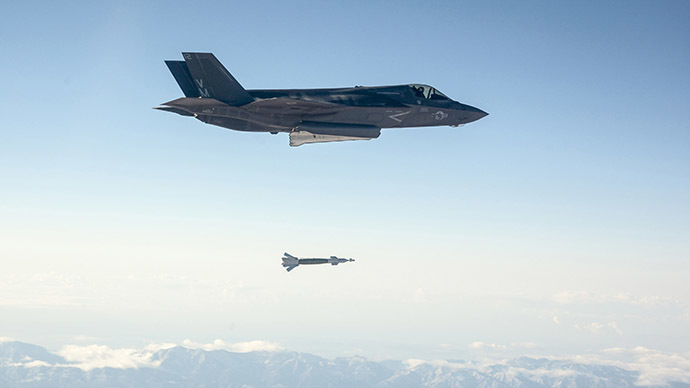US Air Force drops (expensive) mock nuclear bomb in Nevada

The United States Air Force is taking steps to update the Cold War-era B61 nuclear bomb to Mod 12 ‒ or twelfth iteration ‒ completing tests with a mock up version of the weapon in Nevada’s Great Basin Desert.
The B61 has been a top weapon in the US nuclear arsenal since its development at the height of the Cold War in 1963. The intermediate-yield thermonuclear weapon can be delivered by a supersonic aircraft. It is designed to cause a two-stage radiation implosion, but it is a “gravity bomb” – which just means that it’s unguided.
READ MORE: US blocks nuclear disarmament document over Israel, Moscow fumes
The once USSR-facing technology might seem to be an anachronism in this day and age, but President Barack Obama has taken initiative in keeping this weapon alive and well, despite a hefty price tag. The total cost of the program is estimated to be as high as $11 billion, according to the New York Times – and that’s just to update it to its current version.
This seems to be at odds with Obama’s promise of not fielding any new nuclear warheads, which he made during a speech in Prague in 2009. In that same speech, he explained his vision of a United States with less reliance on nuclear arms, and ultimately a world where nuclear weapons are a thing of the past.
The truth looks rather different. A testimony, ominously titled ‘China, India and Pakistan – growing nuclear capabilities with no end in sight,’ was given to Congress by Dr. Ashley J. Tellis of the Carnegie Endowment for International Peace.
“The nuclear weapon programs in these three countries are worthy of attention because they are active, expanding, and diversifying,” the testimony warns.
India and Pakistan are not members of the Nuclear Non-Proliferation Treaty, which came into force in 1970.












